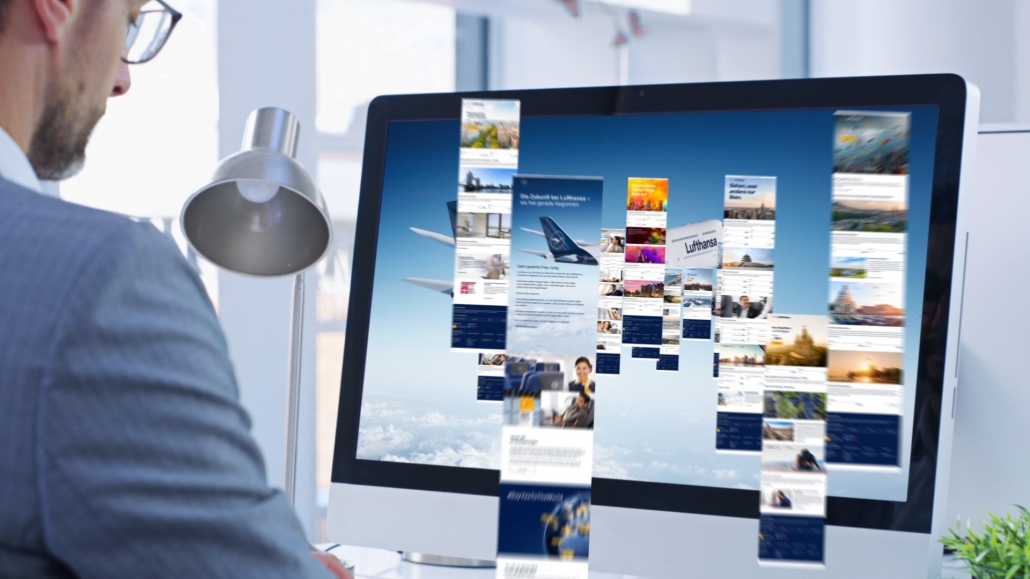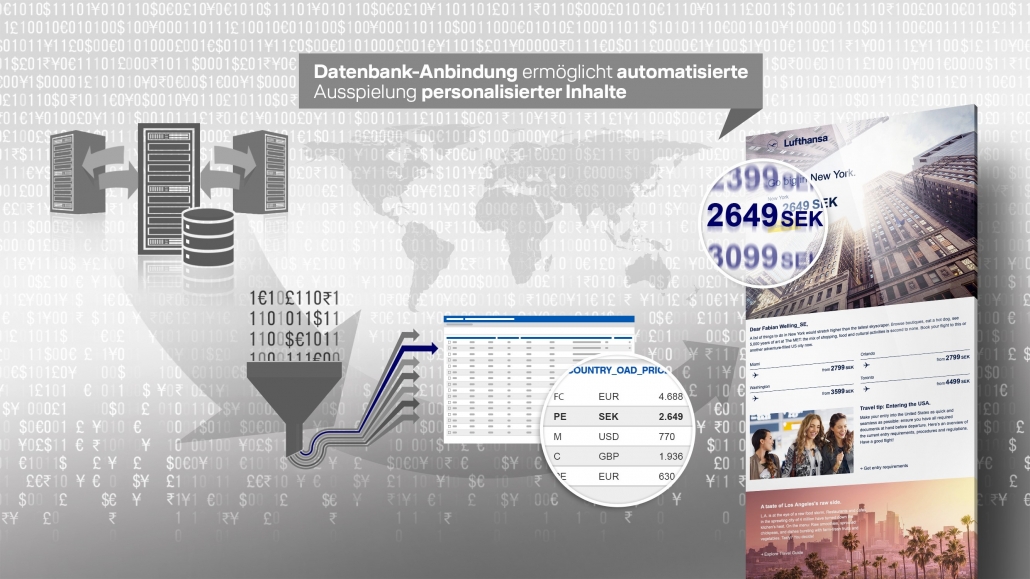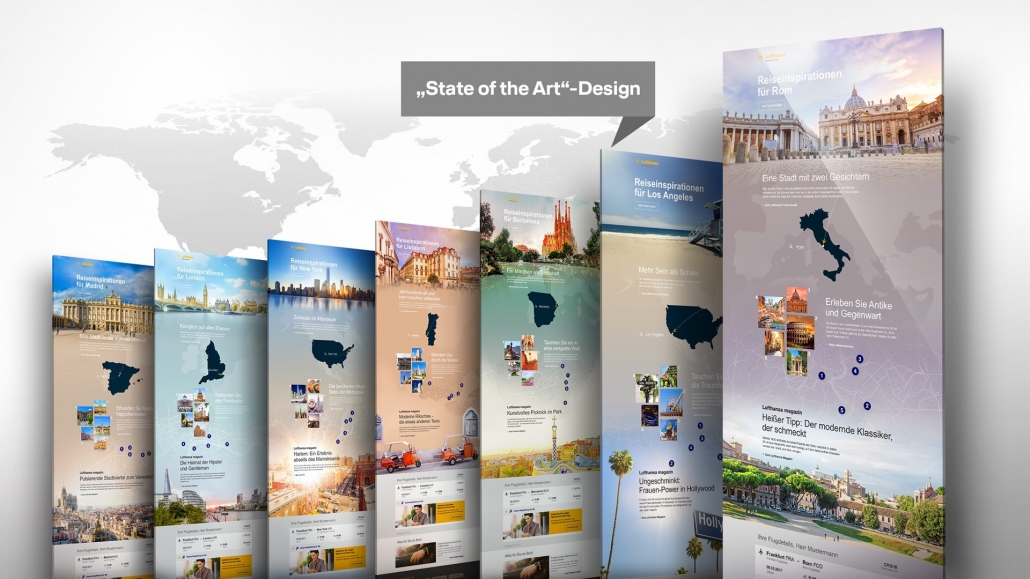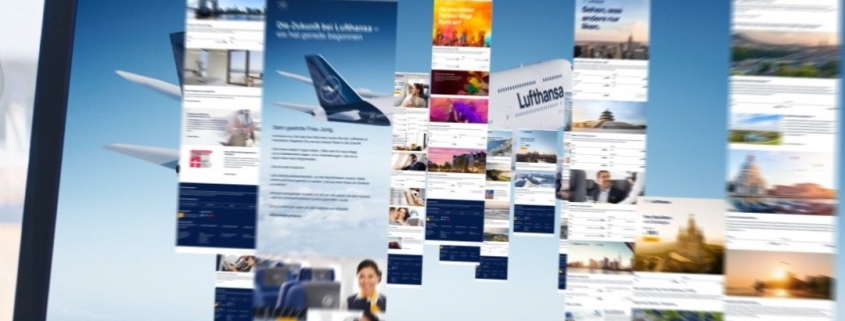- Are you still briefing, or already hitting send? - 23. October 2019
- How do you get 550 daughters to sit down at one table? - 11. July 2019
- The customer in the centre! Seriously? - 6. October 2016
How email campaigns can be made more efficient, even as personalisation levels continue to rise.

Addressing customers directly via newsletters is a more attractive option for advertisers than even before, as this makes it possible to send loyal fans precisely the information that interests them. The art of the right message at the right moment – it’s what the future of email marketing is all about.
Long gone are the days of the scattergun approach based on sending everybody the same generic email. Also gone is the time when inserting “Hello firstname lastname!” into the greeting was enough. From now on, Mr Jones needs to receive his post right on time for his morning coffee at 7. Mrs Jones, on the other hand, needs to receive hers at teatime – in polished English, of course – and including a weather forecast. It also needs to include an offer for a jacket that goes perfectly with the blouse that she bought yesterday – not to mention with the low pressure front in the forecast. Long live personalisation!
And automation longer still, because without it, these ever more complex levels of personalisation would no longer be possible. But how can email campaigns as diverse as these be developed so quickly and kept so up to date?
Bundling all of the processes involved together makes for faster newsletter generation
CRM and dialogue agencies have already developed future-oriented newsletter toolboxes that reproduce each working step in a single system: from briefing, to creation, to sending. This enables rapid newsletter production, content adjustment, population with variable data, and distribution on a more individualised basis than ever before – to a million recipients in a million versions, with a single click. What follows is a short summary of what makes these toolboxes so efficient.
Usability In order for everybody involved to be able to work in the same system, the toolboxes are intuitive and extremely easy to use. Theoretically, no training is required. Much like in Tetris, content modules of different sizes can be placed together one after the other. LIVE! MOBILE OPTIMISED! What you see is what you get. This enables the briefer to define the composition of the newsletter themselves without having to expend large amounts of imaginative effort. The results can be seen immediately.
Filling the modules is ingeniously simple as well: just upload pictures and enter the texts and links, and you’re all finished. Any changes needed? You can make them at any time.

State-of-the-art design In newsletter template design, “form follows function” is very much the guiding principle. And this is for a good reason: the ultimate objective of a newsletter is to elicit clicks from its subscribers, in order to achieve the highest conversion rates possible. That’s why text and images are perfectly combined in a way that takes into account reading flow, the findings of eye tracking studies, and other relevant factors.

Automation The modules can be linked with corresponding, intelligent databases that permit dynamic content (such as prices, weather forecasts, and times) to be brought into play on a flexible basis
Personalisation Based on a master layout, any number of versions can be easily copied and subsequently personalised, for example by transfer into other languages. Deluxe options among the toolboxes on offer even support languages with different writing directions, such as Hebrew, Farsi, and Arabic.
A/B testing scenarios can be produced easily and within a matter of seconds using the copy function.
By subsequently enriching the versions with individual content – for example, based on user behaviour data from re- or geotargeting – highly relevant content can be created and the full attention of the newsletter readers secured.

Distribution Test emails are a thing of the past – specially developed high-end technologies and regulations ensure no more surprises. Following a quality check, the newsletter is ready to be sent directly, using a delivery system of your choice: Oracle Responsys, Cheetah, Epi, Marketo, or one of many others.
In daily use by Deutsche Lufthansa AG…
…is the so-called Newsletter Cockpit, a multifunctional tool of the type described above created in Munich at the request of Serviceplan Group subsidiary Plan.Net Connect. The tool sends highly personalised communications winging their way to over 4,100,000 receivers in 104 countries and 16 languages – and is set to send them to many more in the near future.
This page is available in DE


![c762e24193bc1363f4f2e66a81643156581440c7[1] Chacun est libre de créer](https://serviceplan.blog/sp-content/uploads/2019/04/c762e24193bc1363f4f2e66a81643156581440c71-scaled-e1578400436599-180x180.jpg)




